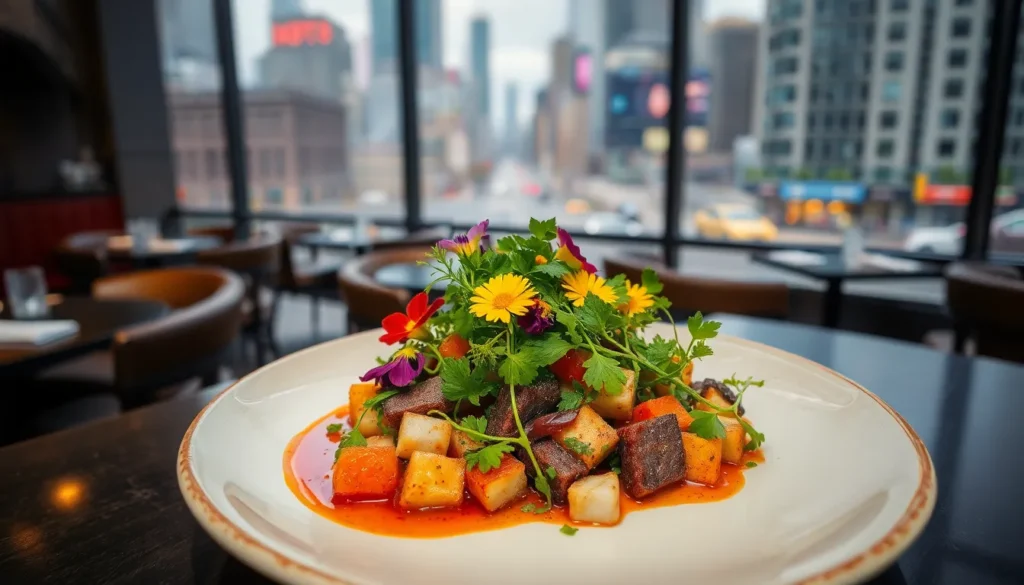Table of Contents
ToggleIn a world where creativity reigns supreme, graphic design offers a golden opportunity for those looking to turn their passion into profit. Imagine transforming your doodles into dollars while sipping coffee in your pajamas. Sounds dreamy, right? A graphic design side hustle not only lets you flex those artistic muscles but also helps pay for that extra guacamole at your favorite taco joint.
What Is a Graphic Design Side Hustle?
A graphic design side hustle refers to freelance work in the graphic design field pursued outside of a primary job. This opportunity allows creative individuals to leverage their design skills and generate additional income. Engaging in such work provides flexibility, enabling designers to choose clients and projects that resonate with their interests.
Designers can work on various projects, including logo creation, social media graphics, or website design. Utilizing platforms like Fiverr, Upwork, or 99designs, individuals can connect with potential clients seeking design services. This approach creates a pathway to expand portfolios while earning extra money.
Many designers enjoy the benefit of working remotely, allowing them to balance personal commitments and professional pursuits. Setting a schedule that accommodates this work frequently leads to enhanced productivity and job satisfaction. An appealing aspect of a graphic design side hustle includes the ability to charge competitive rates based on skill level and project complexity.
Financially, graphic design can provide significant support for everyday expenses. Supplementing income through design projects may reduce the stress of monthly bills, making it more manageable to enjoy life’s little luxuries. Additionally, as designers gain experience, they may increase their income potential through repeat clients and referrals.
A graphic design side hustle empowers creative individuals to turn their passion for design into a rewarding financial venture. By focusing on skills, creativity, and client relationships, designers can thrive in this dynamic field.
Benefits of a Graphic Design Side Hustle
A graphic design side hustle offers significant advantages for creative individuals. These benefits range from gaining financial independence to fostering creative expression.
Financial Independence
Financial independence represents one of the primary advantages of a graphic design side hustle. Designers can earn extra income through freelance projects, contributing to overall financial stability. Income from various design tasks can support everyday expenses, like groceries or dining out. Many designers can charge competitive rates, setting their prices based on skill level and project complexity. Income growth often comes from repeat clients and referrals, increasing overall earnings. Flexibility in scheduling allows designers to take on projects that fit their availability, maximizing potential income without overwhelming their primary responsibilities.
Creative Expression
Creative expression thrives in a graphic design side hustle. Designers often find this opportunity energizing, as it allows them to explore their artistic abilities outside of their main job. Engaging in diverse projects, such as logo development or social media visuals, enables designers to expand their portfolios and showcase their unique styles. Each project presents a chance to experiment with different techniques and clients, enhancing creative skills. Flexibility in choosing clients and themes also leads to increased job satisfaction. This opportunity fosters a deeper connection to their craft, as designers express themselves freely through their work.
Key Skills Required
Graphic design requires a blend of technical and interpersonal skills for success. Mastering these skills enhances the potential for income and client satisfaction.
Design Software Proficiency
Proficiency in industry-standard design software remains crucial for graphic designers. Familiarity with tools like Adobe Creative Suite, including Photoshop, Illustrator, and InDesign, enables designers to execute projects efficiently. Competent use of other software, such as Figma or Sketch, can also distinguish their work. Knowledge of design principles like typography, color theory, and layout enhances the effectiveness of visual communication. A strong software skill set empowers designers to meet client expectations and produce high-quality work.
Marketing Your Services
Marketing services effectively helps graphic designers attract clients. Building an online portfolio showcases skills and completed projects, making a strong first impression. Utilizing social media platforms, such as Instagram and LinkedIn, increases visibility and connects designers with potential clients. Networking events and graphic design communities provide valuable opportunities for collaboration and exposure. Consistent branding across platforms reinforces credibility and professionalism. Designers gain more clients and increased income through targeted marketing efforts.
Finding Your Niche
Identifying a niche is essential for success in a graphic design side hustle. Specializing allows designers to stand out in a competitive market. Graphic designers can explore various sectors, including branding, web design, and illustration.
Branding often involves creating visual identities for companies, including logos, color schemes, and typography. Web design focuses on layouts, usability, and overall user experience for websites. Illustration might range from custom graphics to editorial pieces. Pursuing these niches can enhance a designer’s appeal to potential clients.
Market research plays a vital role in niche selection. Designers should assess demand by studying industry trends, competitor offerings, and target audience needs. Gathering insights about what clients seek helps prioritize specific areas of focus.
Skillset evaluation also influences niche determination. Designers must consider their strengths and interests when choosing a niche. Those who excel at typography might thrive in branding, while others with a knack for UX could find fulfillment in web design.
Creating a unique selling proposition adds value to a designer’s freelance profile. Clearly articulating what sets them apart captures client attention. Highlighting specialized skills, previous successful projects, and distinctive design styles resonates with audiences outside their primary jobs.
Networking within preferred niches is crucial. Engaging in online forums, attending industry events, and collaborating with other professionals builds connections that can lead to new opportunities.
Finally, continuous learning within a chosen niche helps maintain relevance. Staying updated with design software, emerging trends, and evolving client needs ensures a designer remains competitive. By finding and refining their niche, graphic designers can build successful side hustles while maximizing income potential.
How to Get Started
Starting a graphic design side hustle involves several strategic steps. Establishing a solid foundation enhances potential success.
Building a Portfolio
Creating a portfolio showcases design skills and attracts clients. Include diverse work samples that demonstrate versatility in styles and projects. Utilize platforms like Behance or personal websites to display your work visually. Engaging with projects such as logos, illustrations, and social media graphics gives depth to your portfolio. Highlighting previous freelance work or personal projects provides context for prospective clients. Update the portfolio regularly to reflect new skills and projects. Networking with other designers or joining design communities can generate future opportunities.
Setting Competitive Rates
Determining competitive rates necessitates understanding the market and your expertise. Research industry standards to gauge what others charge for similar services. Establish a baseline rate based on skills, experience, and project complexity. Offering tiered pricing can accommodate different client budgets while maintaining income potential. Consider factors such as time investment, design intricacy, and client expectations when setting prices. Displaying a clear pricing structure on platforms or websites helps potential clients grasp value. Adjusting rates over time based on experience and client feedback will ensure continued competitiveness.
A graphic design side hustle offers a unique opportunity for creative individuals to monetize their skills while enjoying the freedom of freelance work. By choosing projects that align with their interests and expertise, designers can create a fulfilling balance between personal and professional life.
This venture not only enhances financial stability but also allows for continuous growth in artistic abilities. With the right strategies in place—like building a strong portfolio and effectively marketing services—designers can carve out a niche that sets them apart in a competitive market.
Ultimately, embracing a graphic design side hustle can lead to both financial rewards and personal satisfaction, making it an appealing option for those looking to explore their creativity beyond the confines of a traditional job.










